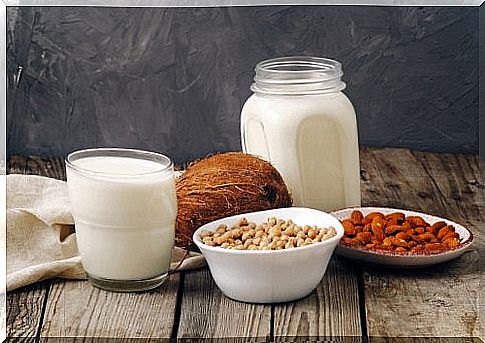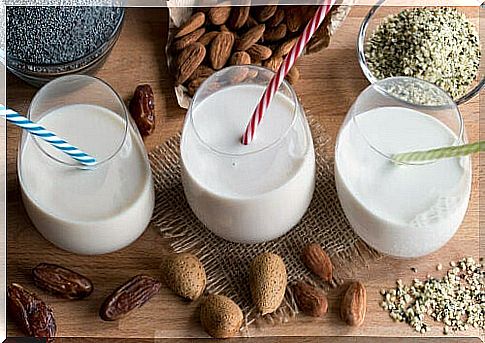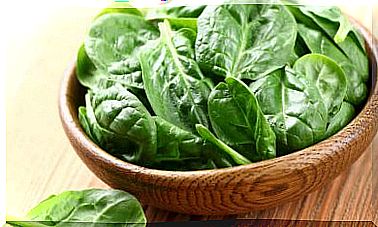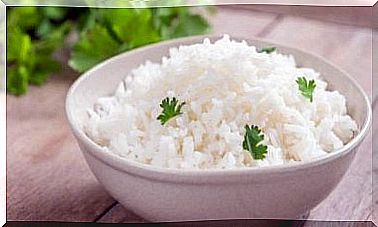Comparison Of Vegetable Milks

Have you ever made a vegetable milk comparison? Do they really represent a positive change from the consumption of cow’s milk? Despite the prejudices surrounding the consumption of cow’s milk, the scientific evidence continually contradicts itself. This means that there is no causal association between the consumption of this drink and the development of diseases.
For this reason, the objective is to mention the properties present in cow’s milk and to make a comparison of vegetable milks, in order to know these benefits supported by science and to break the myths that are currently spread.
Animal milk, especially cow’s milk, has been part of the Western diet for many years. Its consumption has been associated with growth in weight and height in childhood, an indicator that informs us about adequate growth and development.
Nutritional contribution and impact on growth: are they similar?
Currently, many families have chosen to consume non-animal milk, such as soy and almond milk, due to false beliefs. However, herbal milks contain a lower protein and lipid content than cow’s milk. Therefore, they do not have the same impact on children’s growth.
In a study published in the American Journal of Clinical Nutrition in 2017, for every glass of vegetable milk consumed, children were 0.4 cm shorter than the population that consumed animal milk.
Likewise, there was a difference of 1.5 cm in the height of three-year-old preschool children consuming three cups of vegetable milk per day compared to the infant population drinking cow’s milk.

Milk and its nutrients are not essential
Coinciding with the information published in the magazine Nutrición Hospitalaria , in order to break with false beliefs, it is necessary to prove the safety and properties that this drink provides in everyday life.
It is true that there are other foods that are a source of calcium, in addition to cow’s milk and its derivatives, however, being of vegetable origin, the bioavailability and absorption of this mineral suffer interference from substances known as oxalates.
Furthermore, to cover the recommended intake values, large amounts of these foods must be consumed. On the other hand, milk contains lactose, vitamin D and peptides (mainly arginine and lysine) that facilitate the intestinal absorption of calcium.
Other myths related to the consumption of animal milk
1. Lactose is harmful to health
Approximately 35% of the population has an intolerance to this disaccharide. However, most adults with this condition have been found to tolerate up to 12 g of lactose per day (present in a 250 ml glass of milk).
On the other hand, it is also necessary to emphasize that lactose-free dairy products on the market only benefit people with lactose intolerance.
2. Milk and its derivatives increase the development of cardiovascular diseases
This statement is related to the supply of saturated fatty acids. However, these fatty acids (lauric, mystic and palmitic) would only have a negative effect if consumed alone and in excess, a situation that does not occur in the case of milk.
In addition, milk contains stearic and oleic acids that lower blood cholesterol levels, as well as calcium, a cardioprotective mineral.
As you can see, there are myths that unfairly point to milk as harmful to health. However, it is a valuable food from a nutritional point of view and can be part of a balanced diet at any stage of life, as long as there are no conditions that make it unadvisable.
Comparison of vegetable milks: use in diseases
The treatment of chronic non-communicable diseases and hormonal disorders is multidisciplinary. For your correct nutritional approach, there are certain nutrients that must be restricted or supplemented. For this reason, many diseases can benefit from replacing the consumption of cow’s milk with milk of vegetable origin:
Rice milk and oat
Due to their high carbohydrate load and low protein intake, they are recommended for patients with kidney disease, in order to avoid kidney hyperfiltration.

Almond Milk
It is recommended for people with allergies to milk protein and, due to its calcium supply (higher than the rest of vegetable milks), it is suitable for women in menopause.
Soy milk
Due to its contribution of isoflavones, plant compounds with hormonal activity similar to estrogens, it is beneficial for women in menopause.
Coconut milk
Because it has a high contribution of medium-chain fatty acids (MCFA) and a low contribution of carbohydrates, it contributes to decreasing the respiratory load, which is why it is recommended for people with respiratory disorders (asthma, COPD). In addition, given the caloric intake and MGFA, it brings a great benefit to patients with malnutrition.
When purchasing these beverages, it is important that you check the nutrition label as many have a high amount of added sugar. Due to their sugar content and high cost, these drinks can be easily prepared at home using simple recipes.

And the debate continues: is it possible to make a comparison between vegetable milk and cow’s milk?
Finally, cow’s milk is completely different from vegetable milk. Therefore, it cannot be replaced without scientific basis or medical advice.
There are myths about the properties of vegetable milks that have positioned them as a superior product to cow’s milk. However, both can be beneficial in certain situations.
By comparing vegetable milks, we can learn about the effectiveness of their properties and their application for the treatment of certain conditions or diseases. Likewise, knowing the nutritional contribution of cow’s milk and its derivatives, it can be stated that they can be included in a balanced diet at any stage of life.








